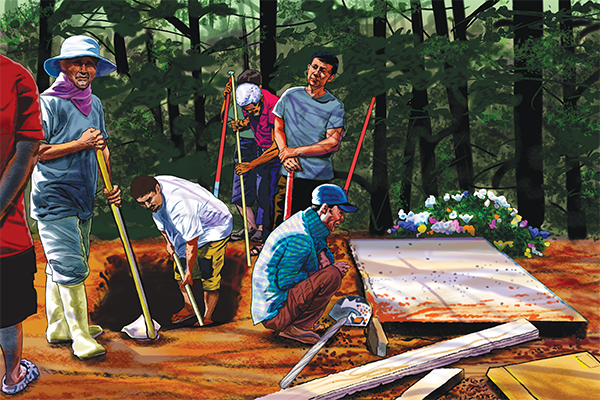Jesus couldn’t afford his own tomb, and neither can thousands of people in this country. A modern funeral costs around $7,000 while the median savings for Americans in 2025 was $8,000—with many people living and dying with far less. Common U.S. practices around death, such as embalming and concrete vaults, take a huge toll not only on people’s finances but also on the environment, leaching harmful chemicals into the earth and slowing the natural process of decomposition.
Jubilee Partners, an intentional Christian community best known for its work welcoming refugees and asylum seekers, keeps a simple cemetery on its 260-acre wooded property. In addition to reducing environmental impact and financial strain, the Jubilee cemetery offers a glimpse of radical hospitality and love of neighbors, even to the very end.
Cemeteries, like just about everything in the United States, tend to be separated, by design or by default, into categories of ethnicity, religion, and class. But the 40 people buried in the Jubilee cemetery comprise a unique underground community where-in those walls of difference crumble beneath a layer of red clay and dirt shaded by a canopy of sweet gum, cedar, and pine. Of the 26 men and 14 women buried there, six died on Georgia’s death row, seven were homeless, 14 came to the U.S. as refugees, several served as pastors and missionaries, one held a Ph.D., some were illiterate, and many found solace and connection during their lives in the offbeat community that named itself after the biblical celebration of Jubilee.
Read the Full Article

